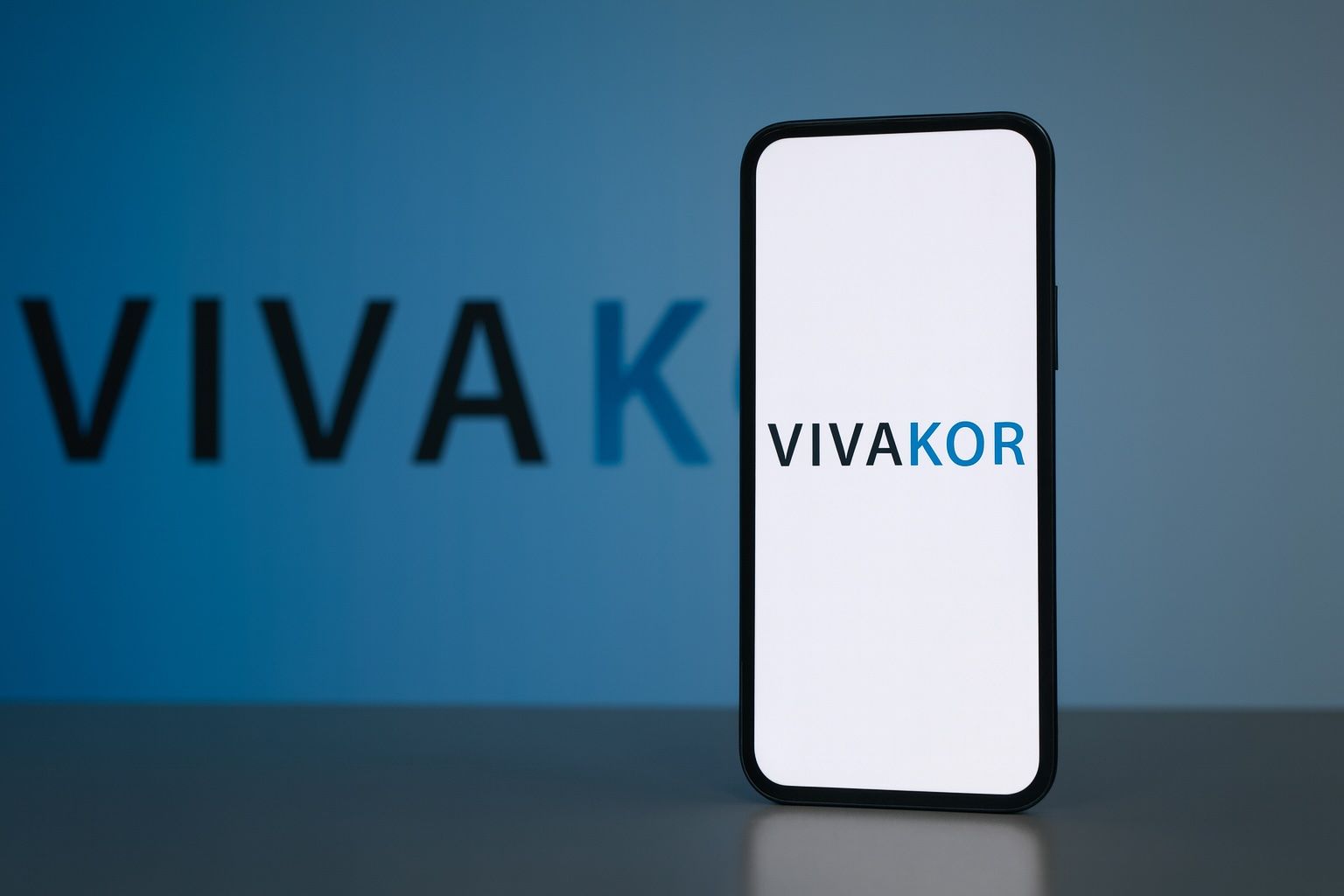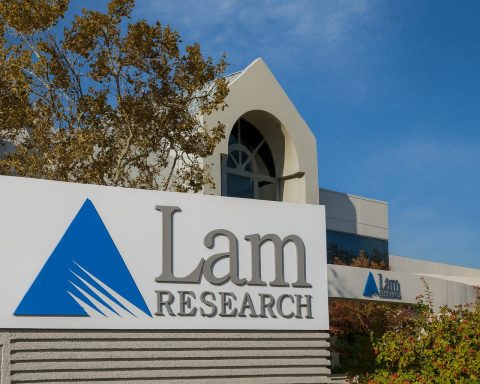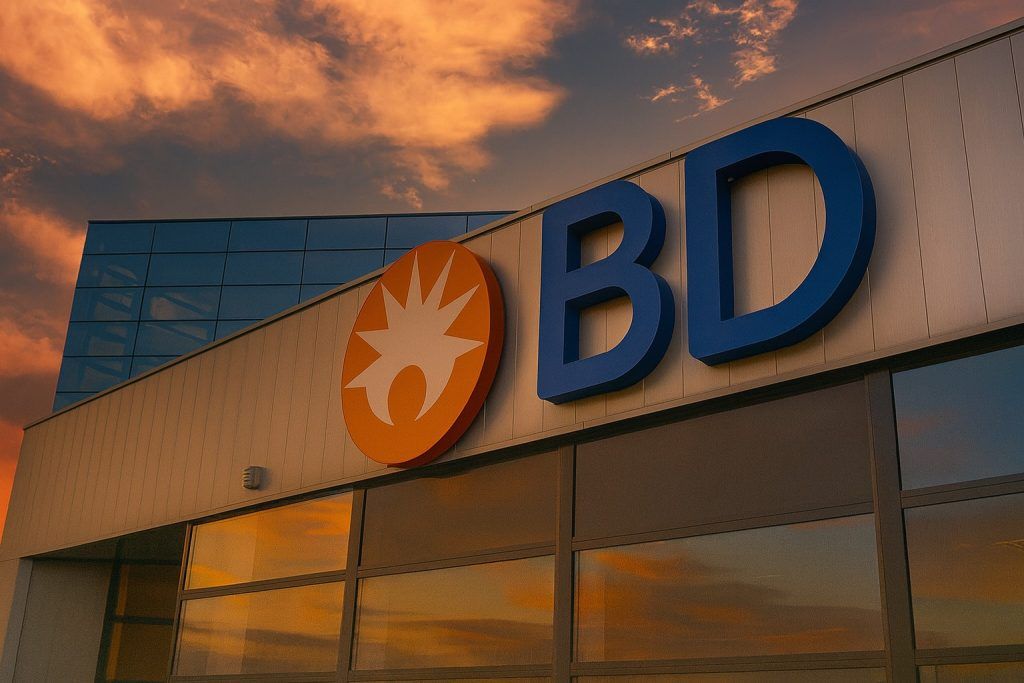- Massive Rally: Vivakor’s stock surged ~50–75% on October 15, 2025 after news of a major funding deal. Shares opened around $0.25, spiked to approximately $0.37 intraday, and closed near $0.28 (up from ~$0.19 the prior day) on extraordinary volume (~230 million shares) [1]. By the morning of Oct. 16, VIVK was hovering around $0.30, marking a roughly 75% gain day-on-day [2].
- $40M Oil Trading Credit Facility: The company announced a non-binding term sheet for a $40 million commodity credit facility to finance its crude oil trading arm [3]. The one-year facility (target closing by Oct. 30) would provide up to $40M in credit support (letters of credit, bonds, etc.) for Vivakor’s oil purchases [4]. CEO James Ballengee said the deal “highlights our growth initiative for Vivakor’s trading segment” and will help integrate more oil volumes and drive “immediate accretive revenue” in its trading operations [5]. This comes on the heels of a late-September term sheet to raise $23 million via convertible preferred stock to expand Vivakor’s oil marketing and remediation businesses [6].
- Nasdaq Compliance Extension: Vivakor has until March 16, 2026 to regain compliance with Nasdaq’s $1.00 minimum bid price rule, after receiving a 180-day extension [7]. To avoid delisting, the stock must trade above $1 for 10 consecutive business days. Management has indicated it may execute a reverse stock split if needed to meet the requirement [8].
- Special Dividend Rescheduled: The company postponed a special dividend (payable in shares of its private affiliate, Adapti, Inc.) to October 31, 2025 [9]. The dividend amounts to roughly 0.0074 Adapti shares per Vivakor share (about $200k–$500k total value) [10], with the payment delayed to ensure all eligible shareholders are properly recorded.
- High Risks Despite Moves: Vivakor remains a tiny micro-cap (market value under $10M) with ongoing financial struggles [11]. It reported ~$89.8M in revenue for 2024 but a net loss of ~$23.0M – nearly double its 2023 loss [12]. The company recently brought in seasoned energy executives as new COO and CFO (August 2025) to tighten operations and financial discipline [13], and has been restructuring debt to stay afloat [14] [15].
Oil Deal Sparks Surging Stock Price
Vivakor’s mid-October rally was ignited by news of a major funding deal aimed at boosting its oil trading business. On October 15, the Dallas-based energy services firm revealed it had signed a term sheet for a $40 million commodity intermediation credit facility with an undisclosed wholesale credit provider [16]. The facility is designed to support Vivakor Supply & Trading, LLC, the company’s crude oil purchasing unit, by providing letters of credit, surety bonds, and cash guarantees to back its physical oil purchases [17]. In essence, this credit line would allow Vivakor to buy and move much larger volumes of crude by underwriting the cost of inventory in transit.
CEO James Ballengee touted the deal as a game-changer for Vivakor’s trading segment, stating it “highlights our growth initiative” and focuses on “integrating volumes across our trucking fleet and facilities” to drive immediate revenue while expanding crude marketing operations [18]. The credit facility, if finalized by the target closing date of Oct. 30, will run for one year and make up to $40 million available to Vivakor’s oil-trading unit [19]. This significant liquidity infusion comes at a critical time – and investors responded with a buying frenzy.
Vivakor’s stock (NASDAQ: VIVK) skyrocketed on the announcement. Shares, which had closed at roughly $0.19 on Oct. 14, opened around $0.25 on Oct. 15 and soared to about $0.37 intraday before settling back to $0.28 at the close [20]. The intraday peak represented nearly a 100% gain, and even the closing price marked a ~50% jump in one session [21]. Trading volume exploded to ~230 million shares – an astronomically high level compared to the stock’s usual daily volume of just a few million [22]. By comparison, Vivakor has roughly on the order of only tens of millions of shares outstanding, underlining the frenzy of activity. By the morning of Oct. 16, the stock was still trading around $0.30 – holding onto most of the prior day’s gains [23].
This stunning one-day rally punctuates what had otherwise been a tough year for VIVK. The stock was languishing below $0.20 in recent weeks and had been “flat-to-down” over the past month in the $0.20–$0.30 range [24]. In fact, earlier in 2025 VIVK briefly hit a 52-week high around $1.68, only to plunge below $0.20 before this mid-October jolt [25]. That history of volatility and collapse set the stage for the outsized percentage gain on Oct. 15. Even after soaring 75%, Vivakor’s share price remains a far cry from the $1+ levels it reached at the start of the year and well under Nasdaq’s minimum price requirement.
New Funding and Strategic Moves
The $40M credit facility news builds on a series of recent strategic financing moves by Vivakor’s management. Just two weeks prior (Sept. 29), the company announced a separate term sheet to raise $23 million by issuing a new series of convertible preferred stock [26]. Under that late-September deal – which is still in process – around $15M of the proceeds would be devoted to a dedicated trading credit line (bolstering the same oil marketing division targeted by the $40M facility), $3M would fund general working capital, and at least $5M would support the company’s oil remediation business [27]. Ballengee described that capital package as one that “would directly support two of our expanding business segments, crude oil marketing and remediation,” creating synergies across Vivakor’s network of trucks and terminals [28]. COO Les Patterson – one of the energy industry veterans Vivakor hired in August – added that the infusion (and an exclusive trucking partnership that comes with it) should “bring in both capital and assets that can be deployed immediately” to boost crude throughput and cleanup operations [29].
In addition to these financings, Vivakor has pursued partnerships to enhance its capabilities. In early September, the company entered a joint venture with Neuralix, Inc. to deploy artificial intelligence in its midstream operations [30]. By integrating Neuralix’s analytics platform, Vivakor aims to optimize its trucking routes, pipeline logistics, and maintenance scheduling. Ballengee said this AI integration will “unlock efficiencies, improve service, and strengthen our position as a forward-thinking energy operator” [31]. These steps reflect management’s push to modernize and expand Vivakor’s oil logistics and remediation business, even as the company contends with financial hurdles.
Notably, Vivakor also reshuffled its leadership team over the summer. In August, it appointed Les Patterson as Chief Operating Officer (COO) and Kimberly Hawley as Chief Financial Officer (CFO) – both seasoned professionals from the energy sector [32]. The goal was to bring in experienced hands to tighten operational efficiency and financial discipline. Hawley stated upon joining that Vivakor is “at an inflection point” and that she would focus on improving financial controls and transparency [33]. These leadership moves signal an attempt to steer the struggling micro-cap toward a turnaround, backed by fresh capital and strategic initiatives.
Compliance Pressures and Financial Risks
Despite the flurry of new deals and the stock’s explosive rebound, Vivakor’s challenges remain significant. The company’s share price is still well below Nasdaq’s $1.00 minimum bid requirement, putting it at risk of losing its Nasdaq listing. In mid-September, Nasdaq granted Vivakor an additional 180-day compliance period – until March 16, 2026 – to lift its stock above $1 [34]. If VIVK cannot achieve a 10-consecutive-day streak with closing prices ≥$1, it will face delisting from the exchange. Vivakor has already indicated it may need to resort to a reverse stock split to artificially boost the share price if organic market appreciation doesn’t occur in time [35]. Delisting would be a severe setback, as it could further reduce liquidity and investor interest. For now, the stock trades on Nasdaq under the symbol VIVK as the clock ticks on compliance.
The company’s underlying financials also paint a cautious picture. Vivakor generated approximately $89.8 million in revenue in 2024, but it posted a net loss of about $23.0 million for the year [36]. In fact, the 2024 loss was nearly double the prior year’s loss, indicating that losses widened even as revenue grew. This persistent unprofitability, combined with the stock’s tiny market capitalization (around $9–$10 million at current prices), underscores the high risk that investors shoulder [37] [38]. Large operating losses and a fragile balance sheet raise questions about how long the company can sustain itself without a dramatic improvement in execution or further dilution of shareholders.
Vivakor has been scrambling to shore up its finances and address debt obligations. In early October, the company entered a second forbearance agreement with its lender J.J. Astor & Co., which provided an additional loan of up to $2.45 million to Vivakor [39]. As part of that deal, Vivakor was able to avoid default on certain notes provided it complies with the new agreement [40]. The company also disclosed converting portions of existing debt into equity to reduce pressure: roughly $900,000 of a promissory note was converted into 6.49 million shares, and another $700,000 note was converted into 5.24 million shares [41]. These moves significantly diluted existing shareholders, but they relieved some debt overhang.
However, debt troubles are not fully behind Vivakor. According to recent filings, the company received a notice of default from J.J. Astor related to a prior junior secured note, with about $7.66 million now immediately due and payable [42]. That note dates back to March 2025 and had already been amended once in July under a forbearance pact [43]. The default notice suggests Vivakor’s creditors are losing patience, and it ratchets up pressure on the company to either renegotiate, refinance, or rapidly raise cash to satisfy obligations. In short, while new funding deals offer a lifeline, Vivakor’s debt and cash flow problems remain acute. Any missteps could force further drastic measures (asset sales, heavy dilution, or restructuring) to keep the company solvent.
Meanwhile, Vivakor’s attempt to reward shareholders with a special stock dividend has seen delays. The company plans to distribute shares of Adapti, Inc. – a private entity in which Vivakor holds an interest – to its shareholders as a one-time special dividend. Originally slated for late September, the payout was rescheduled to October 31, 2025 [44]. The dividend’s overall value is modest (only a few hundred thousand dollars worth of stock spread across all Vivakor shares) [45]. While a dividend in a micro-cap is unusual (and could be seen as a positive sign), the delay and small scale have tempered investor enthusiasm. In fact, some analysts note the Adapti dividend equates to just a few cents per VIVK share – a nice bonus but not a game-changer for shareholders [46]. The postponed schedule also raised questions about administrative or compliance hiccups in executing the payout. Vivakor will need to follow through on Oct. 31 to maintain credibility.
Expert Commentary and Outlook
The dramatic jump in Vivakor’s stock has prompted a range of reactions on Wall Street – from bullish optimism to sober skepticism. Company executives, unsurprisingly, are painting an upbeat picture. CEO Ballengee and the newly appointed leadership insist that the recent financings and partnerships position Vivakor for a turnaround. Ballengee has stated that the combined $40M credit facility and $23M funding package will “create synergies across all of our operating divisions” and lay the groundwork for “long-term value creation” [47]. New CFO Kimberly Hawley likewise conveyed confidence, asserting that Vivakor is at an “inflection point” and emphasizing her commitment to tightened financial control as the business scales [48]. This executive commentary signals that management is in growth mode, not retreat, aiming to leverage the new capital to improve performance.
Outside observers, however, are more mixed. Given Vivakor’s tiny size and history of steep losses, many analysts view the stock as highly speculative. Technical analysis site StockInvest.us recently warned that VIVK “holds several negative signals and is within a very wide and falling trend,” ultimately giving the stock a “negative evaluation” despite the latest bounce [49]. The fact that shares, even after rallying, are trading in mere pennies underscores this caution. Vivakor’s price is still well under the $1 threshold required by Nasdaq, and the looming compliance deadline means that without a sustained rally (or a drastic reverse split), delisting risk remains on the table [50]. “Nasdaq has given Vivakor until March 16, 2026” to cure the deficiency, one report noted, and the company has openly floated a reverse split to meet that mandate if necessary [51]. Such a move, while possibly avoiding delisting, could erode shareholder value further if not accompanied by real improvements in the business.
Looking ahead, bulls vs. bears are split on Vivakor’s prospects. On the bullish side, some forecast models even predict sizable upside from current levels. For instance, one algorithmic service (StockScan.io) projects that Vivakor’s share price could average around $0.76 by the end of 2025, which would imply another +159% gain from the ~$0.30 range [52]. In longer-term scenarios, optimists believe VIVK might reclaim the $1 mark (StockScan models over $1 by 2027) [53], especially if the company successfully expands its crude oil marketing operations and if energy market conditions remain favorable. From this bullish viewpoint, the Oct. 15 price jolt might be just “the start of a sustained recovery”, as Vivakor leverages its new credit facility to drive much higher revenue and potentially achieve profitability [54]. The company’s focus on integrating its trucking fleet, storage terminals, and remediation units could yield efficiency gains and broaden margins if executed well. Additionally, stronger oil prices or volumes (should they materialize) would float all boats in the sector – including Vivakor’s.
Conversely, bearish commentators argue that any rallies in a stock like VIVK could prove fleeting. The stark realities of dilution and debt cannot be ignored. The recent spike came on the back of news, but Vivakor’s float has expanded significantly due to the conversion of debt to equity and could expand further with the preferred stock deal – meaning a lot more shares outstanding chasing the same business value [55] [56]. Heavily diluted, low-priced stocks often face selling pressure as initial euphoria fades. Skeptics point out that previous spikes have quickly evaporated, trapping late buyers. Until Vivakor demonstrates that it can generate consistent profits or at least positive cash flow, any price surges are susceptible to “steep falls” thereafter [57]. The planned Adapti stock dividend, while novel, is valued at only a few cents per share and offers “minimal tangible benefit” to investors in the grand scheme [58]. Bears further note that even with new credit in hand, Vivakor must execute flawlessly to turn that leverage into earnings – not a trivial task for a company that lost $23M last year. And if the Nasdaq compliance clock runs out, a forced reverse split or delisting could deliver a blow to the stock’s value and liquidity [59].
The truth may lie somewhere in between. Vivakor clearly has a lot to prove, but it now also has a larger war chest and growth plans in motion. The coming weeks and months will be critical. Investors will be watching closely to see if the new $40M oil trading facility indeed translates into a surge in revenue and market share – or if it ends up as an undrawn line of credit with little impact. Likewise, the effect of the $23M infusion (if it closes) on Vivakor’s operations will be a key test: can the company capitalize on the exclusive trucking capacity and extra working capital to streamline its supply chain and improve margins? By early 2026, Vivakor will also need to address its stock price situation one way or another. A “high-stakes turnaround” is underway [60], and both bulls and bears have ammunition in this debate. For now, Vivakor’s stock has delivered one of 2025’s more eye-catching short-term gains. Whether that momentum can be maintained – or whether gravity reasserts itself – will hinge on the company’s ability to execute its growth initiatives and navigate the financial minefield ahead.
Sources: Company press releases (GlobeNewswire) and SEC filings [61]; market data from StockAnalysis and Investing.com [62] [63]; commentary from TS² TechStock news [64] [65] and Investing.com [66] [67]; analysis from StockInvest.us [68] and StockScan forecasts [69].
References
1. ts2.tech, 2. ts2.tech, 3. ts2.tech, 4. ts2.tech, 5. ts2.tech, 6. ts2.tech, 7. ts2.tech, 8. ts2.tech, 9. ts2.tech, 10. ts2.tech, 11. ts2.tech, 12. ts2.tech, 13. ts2.tech, 14. uk.investing.com, 15. uk.investing.com, 16. ts2.tech, 17. ts2.tech, 18. ts2.tech, 19. ts2.tech, 20. ts2.tech, 21. ts2.tech, 22. ts2.tech, 23. ts2.tech, 24. ts2.tech, 25. ts2.tech, 26. ts2.tech, 27. ts2.tech, 28. ts2.tech, 29. ts2.tech, 30. ts2.tech, 31. ts2.tech, 32. ts2.tech, 33. ts2.tech, 34. ts2.tech, 35. ts2.tech, 36. ts2.tech, 37. ts2.tech, 38. ts2.tech, 39. uk.investing.com, 40. uk.investing.com, 41. uk.investing.com, 42. uk.investing.com, 43. uk.investing.com, 44. ts2.tech, 45. ts2.tech, 46. ts2.tech, 47. ts2.tech, 48. ts2.tech, 49. ts2.tech, 50. ts2.tech, 51. ts2.tech, 52. ts2.tech, 53. ts2.tech, 54. ts2.tech, 55. uk.investing.com, 56. uk.investing.com, 57. ts2.tech, 58. ts2.tech, 59. ts2.tech, 60. ts2.tech, 61. ts2.tech, 62. ts2.tech, 63. ts2.tech, 64. ts2.tech, 65. ts2.tech, 66. uk.investing.com, 67. uk.investing.com, 68. ts2.tech, 69. ts2.tech







